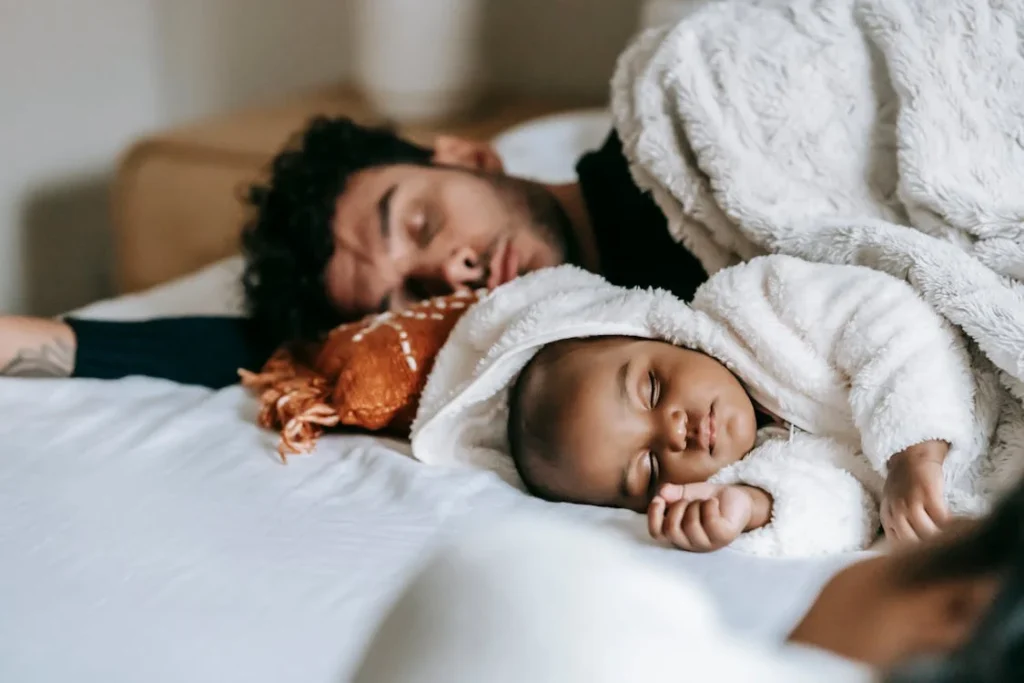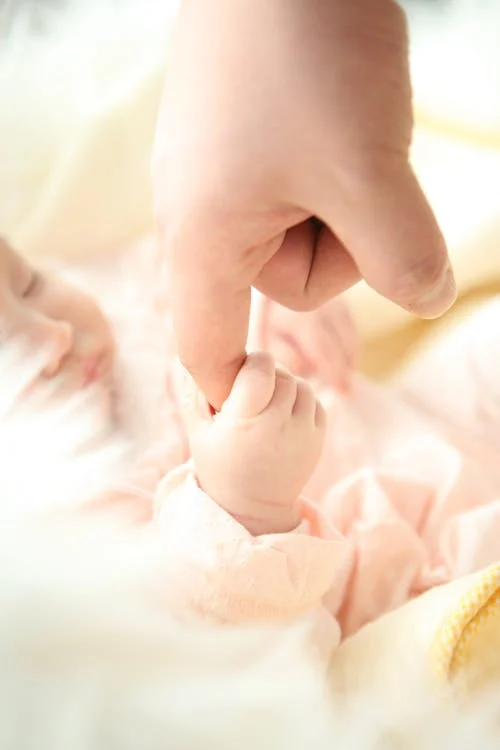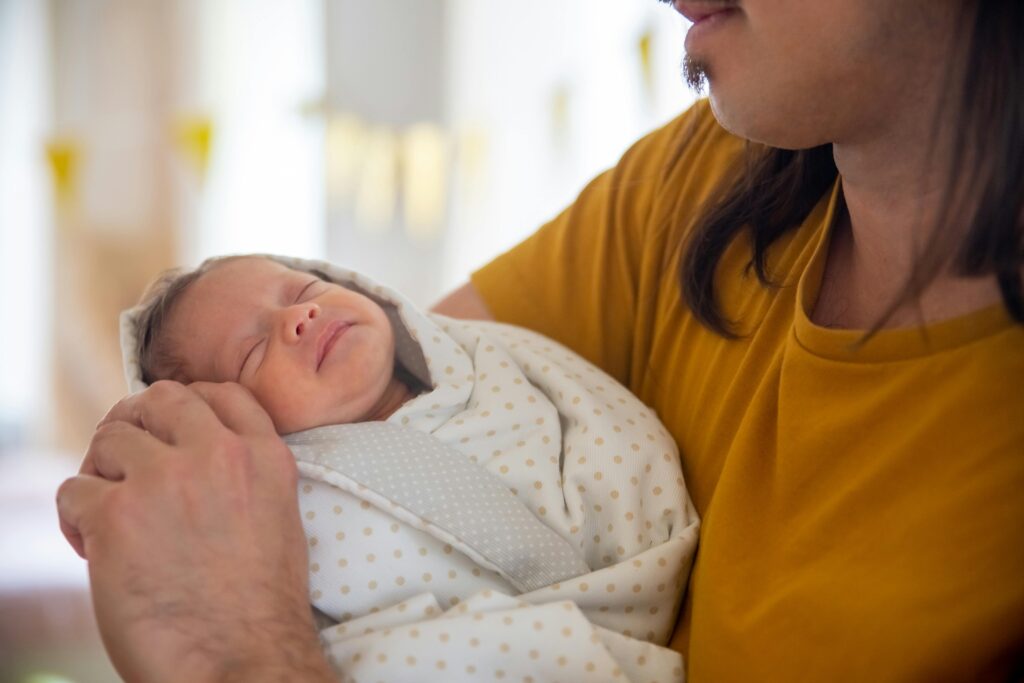Can you share beds? Keep reading to uncover what the Safe Sleep 7 guide has to say! The sheer amount of advice and caution regarding baby care can demoralize new parents. The question of whether you should allow your infant to share a bed with you tends to be quite divisive.
While many cultures view sharing a bed as usual from the moment a baby is born, many scientific and medical organizations in the US are against bed-sharing, also known as co-sleeping, especially for younger babies.
Can your infant, however, share your bed with you? If so, what steps should you take to guarantee that you’re putting them to sleep in a safe spot?
Table of Contents
What Is The Safe Sleep 7 And Who Came Up With It?

Safe Sleep Seven rules were created to make bed-sharing between parents and their infants safer. The book “Sweet Sleep” by Diane Wiessinger, Diana West, Linda J. Smith, and Teresa Pitman introduced the idea in 1999. The overall goal is to normalize bed-sharing, particularly for first-time parents and parents of young children who are still breastfeeding. Moving a baby in and out of a separate sleeping area can be a logistical nightmare in the early days due to frequent feedings and wake-ups and the accompanying exhaustion parents experience. Safe Sleep Seven, frequently mentioned by La Leche League (LLL), is recommended for parents who bottle feed their children and nursing mothers.
The American Academy of Pediatrics (AAP) advises against letting a baby sleep in an adult bed with their parents or other primary caregivers due to the possibility of SIDS and unintentional infant strangulation and suffocation. The AAP advises sharing a room but not a bed.
The Safe Sleep 7 Song

Here are the seven Safe Sleep Tips, to be sung to the tune of “Row, Row, Row Your Boat”:
- no smoke, sober mom
- baby at your breast
- healthy baby on his back
- keep him lightly dressed
- It is not too soft a bed
- watch the cords and gaps
- keep the covers off his head
- for your nights and naps
The American Academy of Pediatrics (AAP) lists certain things you do during and after pregnancy, like smoking, drug or alcohol use, and formula feeding, as risk factors that may lead to SIDS.
No Smoke, Sober Mom
To put it simply, if you plan to share beds with your infant, avoid smoking and drinking alcohol right before bed. Research backs up this claim since many infant deaths linked to bed sharing have happened when one or more parents smoked, drank alcohol, or took medication right before bed. AAP advises against bed-sharing and caution against smoking during pregnancy and exposing unborn children to smoke because these actions can raise the risk of SIDS in children.
Baby At Your Breast
According to this line, your baby shouldn’t be propped on pillows. Be aware that the intended audience for this rhyme is primarily those who are nursing or chestfeeding. Essentially, the concept is that your infant can easily access your breast or chest, which allows nursing.
Your baby should be flat on the mattress with their face close to your breast or chest, not on your pillows right in front of your face. Studies have revealed that women automatically assume a protective stance when nursing while lying down.
Known as a “cuddle curl,” they fiercely encircle their infant, bending their arms and legs so much that it is nearly complicated to roll over them. Research from a 2019 study that found the cuddle curl is more common in breastfeeding mothers than in formula-fed mothers lends credence to this claim.
But remember that even breastfed infants shouldn’t be positioned on pillows. Additionally, it would be best to refrain from supporting a bottle to help feed.
Healthy Baby On His Back
SIDS is most commonly linked to babies who are not placed to sleep on their backs. The safest position for your baby to sleep in is on their back, regardless of whether you put them in a separate room or share a bed.
All significant medical associations, such as LLL and the Centers for Disease Control and Prevention (CDC), concur that babies must sleep on their backs during the night or naps.
Keep Him Lightly Dressed

Babies not only sleep on their backs but also become easily overheated. This is yet another known risk factor for SIDS. The American Academy of Pediatrics advises against dressing a baby for sleep in more than one layer above what you would wear yourself if you were an adult.
Not Too Soft A Bed
Your baby should sleep on its back on a firm mattress. This is yet another Safe Sleep Seven safety feature that most medical professionals agree upon. The surface should be sufficiently firm and supportive to open your baby’s airway.
While toys and bedding should be kept away from your infant as they could suffocate, it’s acceptable to make sure the mattress is covered with a fitted sheet. Generally speaking, avoid placing your infant to sleep on a couch, chair, recliner, or any other surface where they could fall or roll over easily.
Watch The Cords And Gaps
If you have a child who sleeps actively, cords could be a choking hazard. When your infant rolls over or shifts during the night, a bed too near a wall or piece of furniture may become dangerous if trapped in a small area.
Most medical organizations advise against sharing a bed with your infant. Still, they say you should pay attention to your baby’s crib or other sleeping space. It is recommended that if a crib has slats, the distance between them should not be greater than 2⅜ inches to keep a baby from getting trapped between them.
Keep The Covers Off His Head
The Safe Sleep Seven endorses the widely accepted advice from groups like the CDC and AAP that your baby’s sleep area shouldn’t be covered in bedding or toys that could cover their head, just like if they were sleeping in a different room. Similar to babies who sleep alone, there’s a chance a child could suffocate if the bedding presses up against their nose. They can’t move it for whatever reason, leaving you or them in danger.
Conclusion

Choosing to put your infant to sleep in your bed is a personal decision, regardless of the term used. The majority of American medical associations continue to oppose it vigorously. However, more people realize that sharing a bed, especially when breastfeeding, is a fairly common practice that has numerous positive effects on a parent-child bond and overall health worldwide. Therefore, increased efforts are being made to conduct additional research to provide updated Safe Sleep 7 guidelines that guarantee parents can safely share beds.


